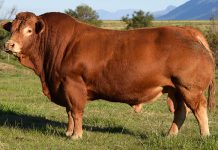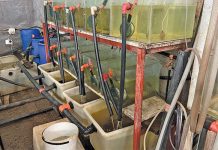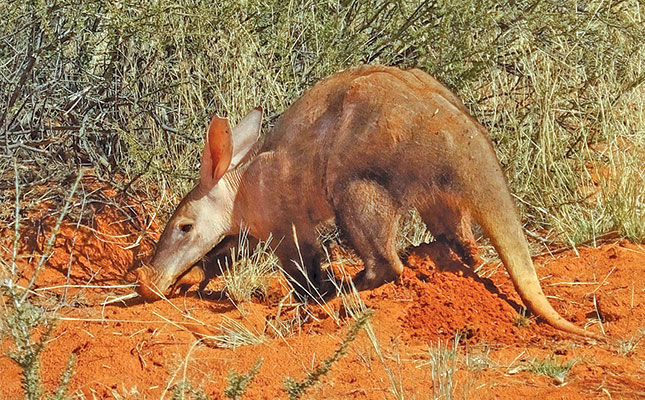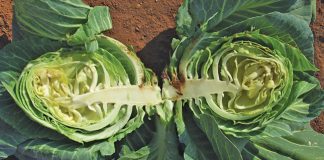
Photo: FW Archive
Mites are a persistent challenge in poultry farming, with significant implications for animal health, productivity, and overall farm economics.
READ First-aid basics for small-scale poultry farmers
Among the various mites that affect poultry, the poultry red mite (Dermanyssus gallinae) and the scaly leg mite (Knemidocoptes mutans) are particularly common in South Africa.
Common mites affecting poultry
According to Dr Njabulo Lekhuleni, a poultry veterinarian, the red mite is arguably the most notorious in South Africa.
“It is followed closely by the scaly leg mite, which is mostly seen on backyard hard-bodied birds. Other mites include the northern fowl mite, Ornithonyssus sylviarum, and the tropical fowl mite, O. bursa. But our focus today will be primarily on the poultry red mite.”
He says understanding how mites spread is crucial for effective management.
“Mites typically spread through mite dispersion or contact with infested birds, other animals, or fomites [inanimate substances or objects, such as tools, which can transfer the mites to hosts].
“In integrated poultry systems, mites are most frequently dispersed via inanimate objects, such as egg trays and crates, or even by personnel moving from house to house. Management practices like spiking can also contribute to their spread,” says Lekhuleni. (Spiking is the addition of young broiler breeder males into an older flock to compensate for the decline in fertility.)
Symptoms of mite infestation
Identifying mite infestations early can save poultry farmers from severe economic losses. Lekhuleni outlined the primary symptoms:
- Constant pecking at feathers or self-grooming;
- Black or brown/red mites on the faces of the chickens;
- Feather loss and sores around the eyes and beak;
- Weight loss, anaemia.
Mortality can occur in severe infestations. Early detection is key to managing mite infestations effectively. Lekhuleni says:
“Good stockmanship always wins. Constantly observing your birds’ behaviour will alert you to changes like abnormal pecking, head shaking, or restlessness. Red mites are very small, so you must look closely, especially at night. Check nest box crevices, chain feeder legs, and even use white fallen feathers to pick in between crevices. Early morning observations can reveal mite trails on top of the nest boxes if the infestation is severe.”

Effective treatment
Treating mite infestations requires a multifaceted approach. Lekhuleni advises: “Treat both the birds and their environment, considering the mite’s life cycle. Normally, two treatments are required to kill recently hatched mites.
Dusting and spraying acaricides can be effective, but ensure they reach the skin, not just the feathers.
“Products containing fluralaner, an acaricide and insecticide, are also available. For hobby birds, 0,5ml of ivermectin per kilogram of body weight can be applied to unfeathered skin areas,” he says.
Health and productivity affected
Mites significantly impact poultry health and productivity. Lekhuleni notes:
“Overall bird behaviour is affected, leading to reduced feeding and drinking, which in turn affects egg production. Severe infestations can result in blood spots on eggs and cause hens to lay on the floor, increasing the rejection of eggs. Mites stress the birds, and any living organism under stress doesn’t perform optimally.”
READ The critical role of proper nutrition in pig and poultry production
When asked about breed susceptibility, he said: “There is no evidence of breed specificity regarding mite infestations. All breeds can be affected.”
Environmental conditions that favour mite proliferation
Environmental conditions play a significant role in mite proliferation. “Mites invade, especially during warmer summer months, as warmth gives the red mite ideal breeding conditions. Numbers proliferate quickly in temperatures between 25° and 30°C and 60% to 70% humidity. The mite’s life cycle shortens to about seven to 14 days under these conditions,” he says.
Preventing mite infestations
Prevention is always better than cure. Lekhuleni offers several preventive measures:
- Obtain mite-free birds when buying in point of lay;
- Practise good biosecurity to prevent a build-up of mite populations;
- Control can be achieved by spraying or dusting the birds and litter;
- Target all hiding places for mites; and
- Maintaining cleanliness in poultry housing is critical.
Mites infestation has direct implications for egg production and quality.
“Infested birds are stressed and less productive, leading to more dirty eggs laid on the floor. This affects the overall quality and marketability of the eggs,” he says.
Mites can transmit diseases, posing risks beyond poultry health. “Red mites have been implicated as vectors for various poultry viral and bacterial pathogens, as well as zoonotic diseases such as Newcastle disease, equine encephalomyelitis viruses, and bacteria like Escherichia coli, Pasteurella multocida, and avian influenza A virus. There is also evidence of mites causing pruritic skin eruptions in poultry workers.”
Cleaning and treating poultry housing
Regular cleaning and treatment of poultry housing are essential. Lekhuleni advises: “In South Africa, the all-in-all-out system is common.
“Once a flock is depleted, the litter is removed, and cleaning and disinfection are done. Heating houses above 45°C can be lethal to mites, ensuring those in hiding are also eradicated.”
Managing mites in free-range systems
Free-range systems require specific management strategies. Lekhuleni adds: “Natural predators, such as predatory mites, can be used to control pest populations. These predators can be mass-reared in labs and released on farms to increase their effect.”
Natural or organic treatments
For those seeking organic solutions, he suggests natural diatomaceous earth powder, which can be used in poultry housing to dry litter and deter mites.
“Essential oils from plants like garlic, neem, thyme, and tea have toxic effects on red mites. Heat treatment is also effective.”
Mites significantly affect poultry behaviour and welfare. “A comfortable environment is crucial. Mites cause discomfort, leading to stress, which in turn affects physiological functions.
“Research shows mite infestation increases corticosterone levels, indicating stress and immunosuppression. This makes mite infestation a recognised animal welfare issue,” Lekhuleni emphasises.
The Role of biosecurity measures
Biosecurity measures are vital in controlling mite infestations. “Mite movement often occurs via tools and egg trays. Following biosecurity principles, like having dedicated tools per house, reduces the risk. Avoiding intra-spiking and inter-spiking also helps, as does sourcing birds from reputable, mite-free sources.”
Resistance to common treatments
Mites can develop resistance to treatments, posing challenges for control: “Resistance to pyrethrins and pyrethroids is widespread due to their common use and misuse. Farmers must follow manufacturers’ recommendations on dosages and application to curb future resistance issues,” Lekhuleni says.
Mite infestations have significant economic impacts. He adds: “Infestations lead to more rejected dirty eggs, affecting hatchability and marketability. Feed conversion ratios and body weights are affected, and males’ mating behaviours are disrupted, leading to fertility issues. Blood spots on commercial eggs reduce their market appeal.”
Integrated Pest Management strategies
Integrated pest management strategies can effectively control mites.
“Combining different treatments suitable for each farm and housing system is crucial,” Lekhuleni says.
“Prevention through biosecurity measures and hygiene management, monitoring through good stockmanship, and effective control measures are key. Applying treatments directly after bird removal and using insecticides effective against mite eggs can prevent reinfestation.”
Recent research and technologies offer promising solutions as well: “Essential oils from plants have shown toxic effects against red mites. Vaccines against mites are being developed, and predator mites are being explored as natural enemies to combat red mites. Entomopathogenic fungi also show potential as a treatment,” Lekhuleni says.
In essence, effective management of mite infestations in poultry requires a multifaceted approach, combining prevention, early detection and targeted treatments. By understanding the life cycle of mites and employing integrated pest management strategies, poultry farmers can protect their flocks and ensure optimal productivity.












